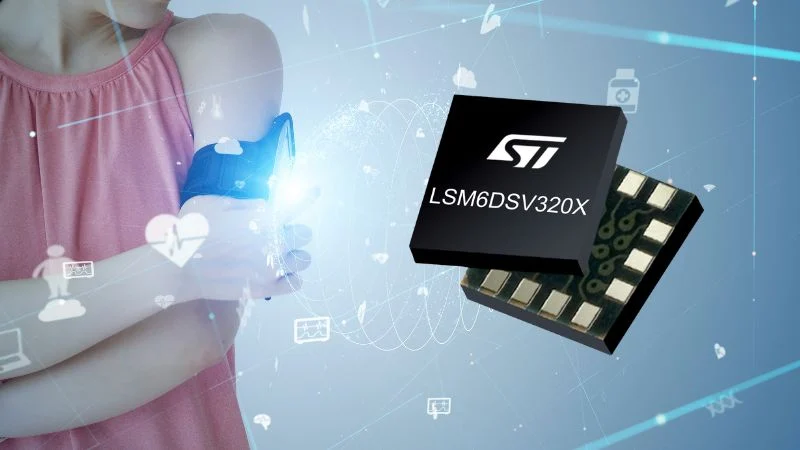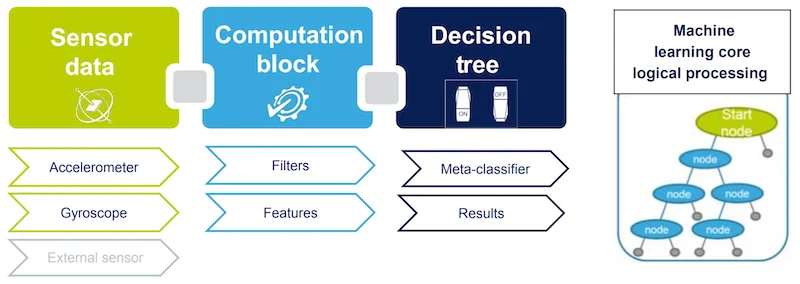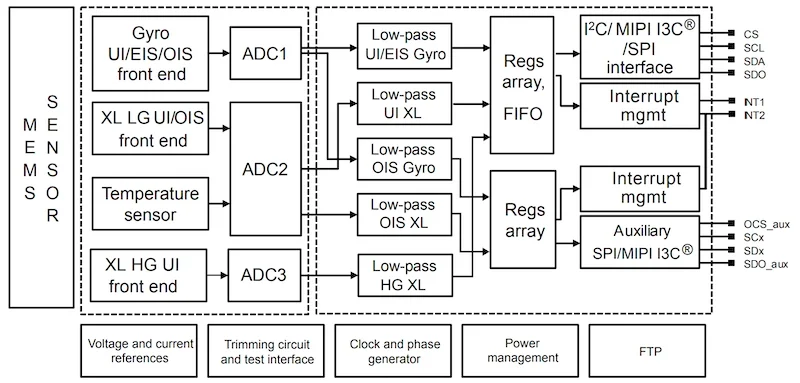The compact AI-enabled sensor captures both routine movement and high-g impacts, enabling smarter wearables and IoT devices.
Most motion sensors can either precisely track daily activities or detect sudden jolts during a high-impact event. Rarely can a single sensor do both, let alone do it well.
STMicroelectronics has recently released its LSM6DSV320X, a compact AI-enabled inertial measurement unit (IMU) with a unique dual-accelerometer design. Measuring at just 3 mm x 2.5 mm, this device can detect everyday movements with high fidelity while also capturing extreme impacts up to 320 g.

ST's IMU features embedded adaptive self-configuration, allowing the LSM6DSV320X to adjust its own internal settings in real-time.
What makes it stand out isn’t just the sensing range but how smartly it works with AI and self-adjusts to its environment.
One Sensor, Multiple Roles
The LSM6DSV320X (datasheet linked) combines two accelerometers—one tuned for subtle, everyday motions and another built for high-impact shock—with a gyroscope, all in a single, synchronized module. This integration eliminates the need for multiple components and simplifies product design for developers looking to build wearable tech, gaming gear, or industrial monitors without sacrificing space or power.
The LSM6DSV320X sensor’s architecture can process acceleration and angular rate data on four separate channels, allowing it to distinguish between routine activity and sudden impacts. This setup not only promotes a more compact design but also allows it to be more accurate and reliable, even if it is strapped to an athlete’s wrist or embedded in a structural health monitor on a bridge.
Smarter Development With Built-In AI Tools
Getting AI up and running on the LSM6DSV320X doesn’t require a Ph.D. in machine learning, either. STMicroelectronics provides a suite of development tools aimed at simplifying design and speeding up deployment. Engineers can access MEMS Studio and ST AIoT Craft, a graphical environment that allows teams to configure the sensor, build models, and integrate AI features directly onto the device.

The LSM6DSV320X’s machine learning core can be configured to run up to eight decision trees simultaneously, with each tree yielding up to 16 results.
For more advanced applications, the sensor includes a Machine Learning Core (MLC) and a Finite State Machine (FSM) that allow it to run AI inference locally. That means it can detect context, such as recognizing a fall or a rapid tilt, without constantly pinging the main processor. This saves battery life and frees up system resources. Additionally, developers can take advantage of ST’s patented Motion XLF library, which merges data from both accelerometers to deliver cleaner, more reliable readings even under intense movement.
Adaptive Self-Configuration Changes the Game
One of the most compelling features of the LSM6DSV320X is its adaptive self-configuration (ASC) capability. ASC allows the device to automatically adjust its internal settings in real-time based on detected movement patterns or input from the MLC.

Block diagram of the LSM6DSV320X's filters.
With this feature, the sensor always operates in the most power-efficient mode without user intervention. If someone wearing a fitness tracker suddenly goes from walking to sprinting or takes a tumble while rock climbing, the sensor can respond instantly, dialing up the sensitivity or shifting modes without draining the battery or waiting for instructions from the main CPU.
More Intelligence for Movement Monitoring
In environments like industrial safety or sports injury monitoring, those milliseconds count. A sensor that adapts on its own can be the difference between capturing a critical event and missing it entirely. By minimizing reliance on host processing, the LSM6DSV320X supports longer battery life, allowing the user to get more out of their products between charges.
All images used courtesy of STMicroelectronics.



